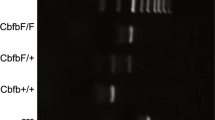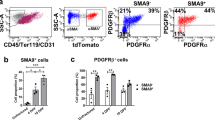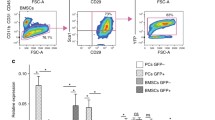Abstract
Head injury-induced heterotopic ossification (HO) develops at vicinity of joints and in severe cases requires surgical intervention. Our previous study demonstrated high mRNA levels of osteocalcin (OC), type 1 collagen (COL1), osteonectin and RUNX2/CBFA1 in osteocytes and lining osteoblasts from non-evolutive HO compared to equivalent healthy cells from the proximal femoral shaft of patients receiving prosthesis. This allowed a first molecular characterisation of this pathological bone. The aims of this study is to extend the analysis to 10 more genes and determine those involved in the high OC mRNA level observed in pathological bone samples. RNAs were prepared from normotopic and heterotopic human bone samples digested by collagenase. After cDNA synthesis, mRNA levels were determined by real-time PCR and normalised using β actin and glyceraldehyde-3-phosphate dehydrogenase. OSTERIX/SP7 expression was observed for the first time in human adult bone biopsies. In HO samples higher levels of SP7 (four- to sevenfold increase) and 1α,25-dihydroxy vitamin D3 receptor (VDR) (two- to threefold increase) were observed compared to control samples. Moreover, SP7 level was correlated to OC and RUNX2 levels. In control samples, OC and SP7 levels were correlated. Our study further confirms that the involvement of SP7 in bone physiology is not only limited to the developmental step. Moreover, our results support the hypothesis that in HO the high level of OC expression could be due not only to an increase in RUNX2, but also in SP7 or VDR or to an imbalance in their respective activities.



Similar content being viewed by others
Abbreviations
- (1,25(OH)2D3):
-
1α,25-Dihydroxyvitamin D3
- AP-1:
-
Activator protein-1
- COL1:
-
Type 1 collagen
- GAPDH:
-
Glyceraldehyde-3-phosphate dehydrogenase
- GR:
-
Glucocorticoid receptor
- GRE:
-
Glucocorticoid response element
- HO:
-
Heterotopic ossification
- OC:
-
Osteocalcin
- RT-PCR:
-
Reverse transcriptase-polymerase chain reaction
- RXR:
-
Retinoid X receptor
- SP7:
-
Specificity protein 7
- VDR:
-
1α,25-Dihydroxyvitamin D3 receptor
References
Ippolito E, Formisano R, Caterini R et al (1999) Operative treatment of heterotopic hip ossification in patients with coma after brain injury. Clin Orthop Relat Res 365:130–138. doi:10.1097/00003086-199908000-00018
Shehab D, Elgazzar AH, Collier D (2002) Heterotopic ossification. J Nucl Med 43:346–353
Sell S, Gaissmaier C, Fritz J et al (1998) Different behavior of human osteoblast-like cells isolated from normal and heterotopic bone in vitro. Calcif Tissue Int 62:51–59. doi:10.1007/s002239900394
Rigaux P, Benabid N, Darriet D et al (2005) Study of serum factors potentially involved in the pathogenesis of heterotopic bone formation after severe brain injury. Joint Bone Spine 72:146–149. doi:10.1016/j.jbspin.2004.05.012
Lian JB, Stein GS, Stein JL et al (1998) Osteocalcin gene promoter: unlocking the secrets for regulation of osteoblast growth and differentiation. J Cell Biochem 30–31(suppl):62–72. doi:10.1002/(SICI)1097-4644(1998)72:30/31+<62::AID-JCB10>3.0.CO;2-S
Chauveau C, Devedjian JC, Blary MC et al (2004) Gene expression in human osteoblastic cells from normal and heterotopic ossification. Exp Mol Pathol 76:37–43. doi:10.1016/j.yexmp. 2003.10.001
Lee NK, Sowa H, Hinoi E et al (2007) Endocrine regulation of energy metabolism by the skeleton. Cell 130:456–469. doi:10.1016/j.cell.2007.05.047
Bendall AJ, Abate-Shen C (2000) Roles for Msx and Dlx homeoproteins in vertebrate development. Gene 247:17–31. doi:10.1016/S0378-1119(00)00081-0
Newberry EP, Lafiti T, Towler DA (1998) Reciprocal regulation of osteocalcin transcription by the homeodomain proteins Msx2 and Dlx5. Biochemistry 37:16360–16368. doi:10.1021/bi981878u
Canalis E (1996) Mechanisms of glucocorticoid action in bone: implications to glucocorticoid-induced osteoporosis. J Clin Endocrinol Metab 81:3441–3447. doi:10.1210/jc.81.10.3441
Meyer T, Carlstedt-Duke J, Starr DB (1997) A weak tata box is a prerequisite for glucocorticoid-dependent repression of the osteocalcin gene. J Biol Chem 272:30709–30714. doi:10.1074/jbc.272.49.30709
Lian JB, Stein JL, Stein GS et al (2001) Contributions of nuclear architecture and chromatin to vitamin D-dependent transcriptional control of the rat osteocalcin gene. Steroids 66:159–170. doi:10.1016/S0039-128X(00)00160-4
MacDonald PN, Dowd DR, Nakajima S et al (1993) Retinoid X receptors stimulate and 9-cis retinoic acid inhibits 1,25-dihydroxyvitamin D3-activated expression of the rat osteocalcin gene. Mol Cell Biol 13:5907–5917
Sims NA, White CP, Sunn KL et al (1997) Human and murine osteocalcin gene expression: conserved tissue restricted expression and divergent responses to 1,25-dihydroxyvitamin D3 in vivo. Mol Endocrinol 11:1695–1708. doi:10.1210/me.11.11.1695
Ducy P, Zhang R, Geoffroy V et al (1997) Osf2/Cbfa1: a transcriptional activator of osteoblast differentiation. Cell 89:747–754. doi:10.1016/S0092-8674(00)80257-3
Nakashima K, Zhou X, Kunkel G et al (2002) The novel zinc finger-containing transcription factor osterix is required for osteoblast differentiation and bone formation. Cell 108:17–29. doi:10.1016/S0092-8674(01)00622-5
Gao Y, Jheon A, Nourkeyhani H et al (2004) Molecular cloning, structure, expression, and chromosomal localization of human osterix (SP7) gene. Gene 341:101–110. doi:10.1016/j.gene.2004.05.026
Milona MA, Gough JE, Edgar AJ (2003) Expression of alternatively spliced isoforms of human Sp7 in osteoblast-like cells. BMC Genomics. Published Online. doi:1471-2164/4/43
Kaback LA, Soung do Y, Naik A et al (2008) Osterix/Sp7 regulates mesenchymal stem cell mediated endochondral ossification. J Cell Physiol 214:173–182. doi:10.1002/jcp. 21176
Tu Q, Valverde P, Li S et al (2007) Osterix overexpression in mesenchymal stem cells stimulates healing of critical-sized defects in murine calvarial bone. Tissue Eng 13:2431–2440. doi:10.1089/ten.2006.0406
McCabe LR, Banerjee C, Kundu R et al (1996) Developmental expression and activities of specific Fos and Jun proteins are functionally related to osteoblast maturation: role of Fra-2 and Jun D during differentiation. Endocrinology 137:4398–4408. doi:10.1210/en.137.10.4398
Demay MB, Gerardi JM, DeLuca HF et al (1990) DNA sequences in the rat osteocalcin gene that bind the 1,25-dihydroxyvitamin D3 receptor and confer responsiveness to 1,25-dihydroxyvitamin D3. Proc Natl Acad Sci USA 87:369–373. doi:10.1073/pnas.87.1.369
Paredes R, Arriagada G, Cruzat F et al (2004) The Runx2 transcription factor plays a key role in the 1alpha, 25-dihydroxy vitamin D3 receptor-dependent upregulation of the rat osteocalcin (OC) gene expression in osteoblastic cells. J Steroid Biochem Mol Biol 89–90:269–271. doi:10.1016/j.jsbmb.2004.03.076
Jääskeläinen T, Ryhänen S, Mahonen A et al (2000) Mechanism of action of superactive vitamin D analogs through regulated receptor degradation. J Cell Biochem 76:548–558. doi:10.1002/(SICI)1097-4644(20000315)76:4<548::AID-JCB3>3.0.CO;2-0
Santiso-Mere D, Sone T, Hilliard GMIV et al (1993) Positive regulation of the vitamin receptor by its cognate ligand in heterologous expression systems. Mol Endocrinol 7:833–839. doi:10.1210/me.7.7.833
Yeung F, Law WK, Yeh CH et al (2002) Regulation of human osteocalcin promoter in hormone-independent human prostate cancer cells. J Biol Chem 277:2468–2476. doi:10.1074/jbc.M105947200
Kurata H, Guillot PV, Chan J et al (2007) Osterix induces osteogenic gene expression but not differentiation in primary human fetal mesenchymal stem cells. Tissue Eng 13:1513–1523. doi:10.1089/ten.2006.0374
Zhong N, Garman RA, Squire ME et al (2005) Gene expression patterns in bone after 4 days of hind-limb unloading in two inbred strains of mice. Aviat Space Environ Med 76:530–535
Acknowledgements
The authors thank Dr. B. Bouxin for work expertise and assistance, Dr. D. Lamy for statistical analysis and B. Christmas for critical reading of the manuscript. This work was supported in part by grants from the Société Francaise de Rhumatologie (SFR) and by the Contrat Plan Etat Région Nord-Pas de Calais.
Author information
Authors and Affiliations
Corresponding author
Additional information
C. Chauveau and O. Broux contributed equally to this work.
Rights and permissions
About this article
Cite this article
Chauveau, C., Broux, O., Delecourt, C. et al. Gene expression in normotopic and heterotopic human bone: increased level of SP7 mRNA in pathological tissue. Mol Cell Biochem 318, 81–87 (2008). https://doi.org/10.1007/s11010-008-9859-5
Received:
Accepted:
Published:
Issue Date:
DOI: https://doi.org/10.1007/s11010-008-9859-5




